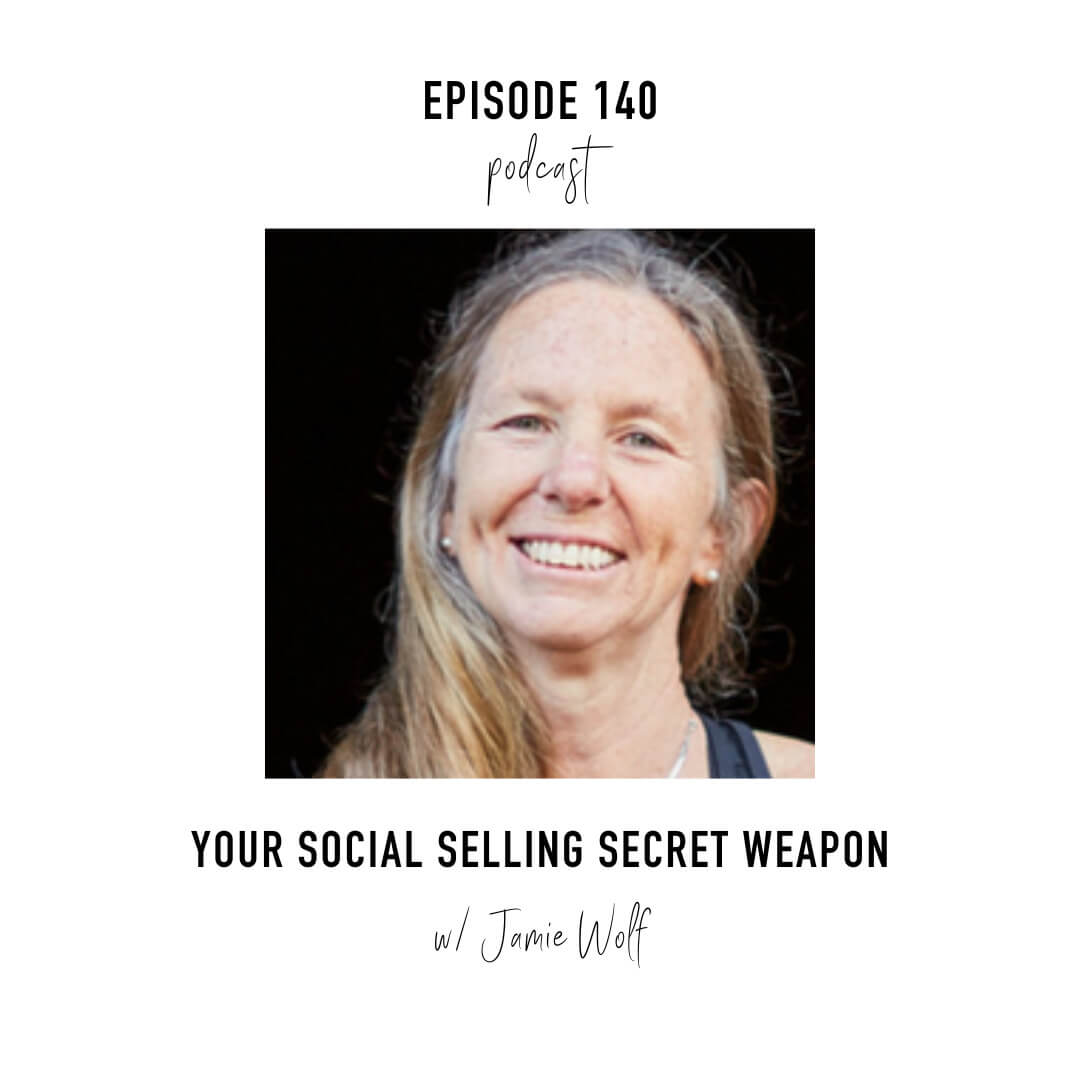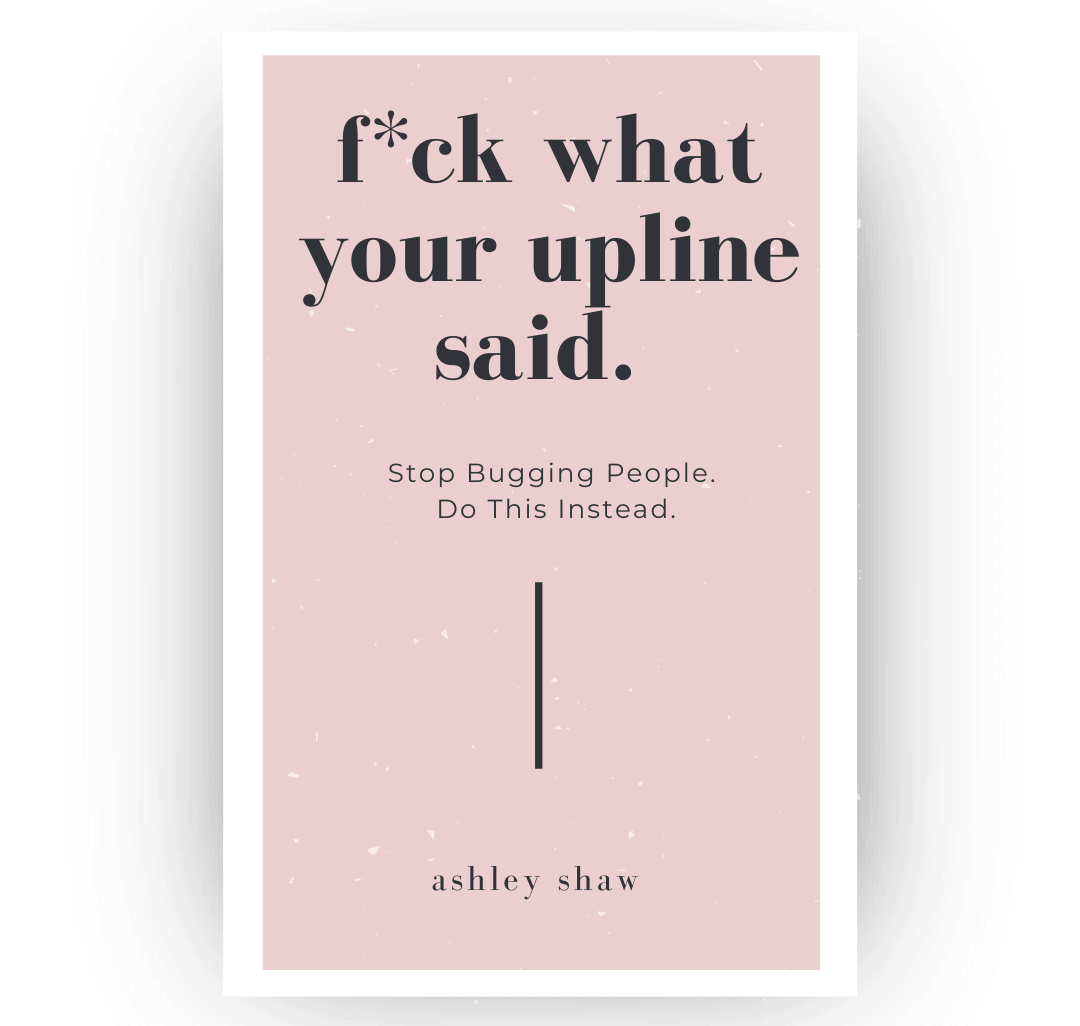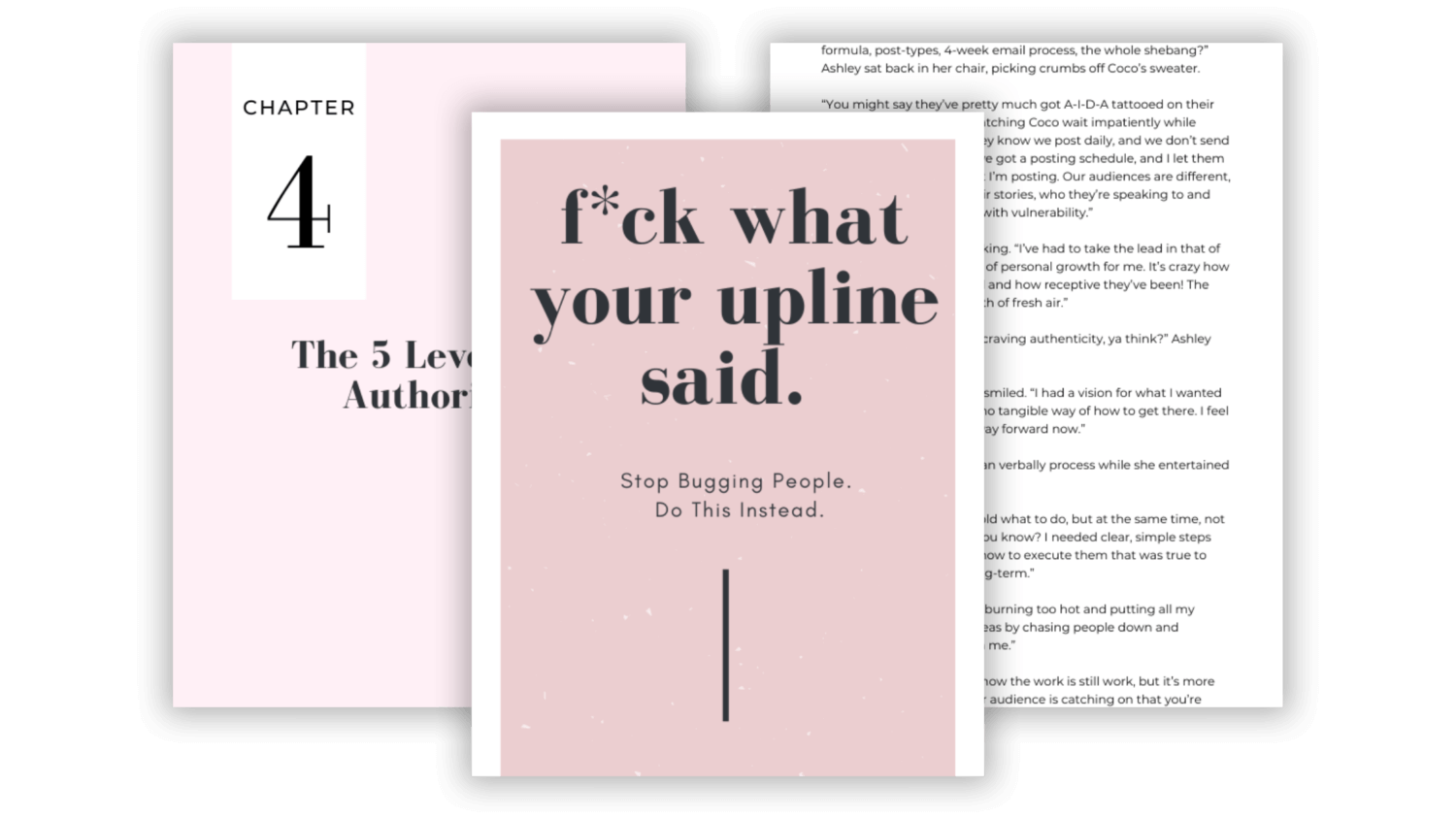
So why a book? Let’s talk about how it can actually help you in your social selling efforts.
It helps people know if they’re with you or not! Jamie firmly believes that a book can accomplish SO much- especially if you’re “the laziest hard working person you’ve ever met,” as she described herself.
A book lets you work one time, then distribute it over and over again! She was tired of answering the same questions, so she wrote a book.
Now we’re not talking about the kinds of books that require locking yourself in a cabin in the mountains to write… just 50-100 pages, or something written off bullet points into a manifesto. Give some back story!
How did you get to be here?
What was your journey?
Where are you going, and who can come with you?
What are they going to get when they join your tribe?
How did you overcome hurdles other people run into all the time?
Teach a little, so people can get an idea of what it’s like working with you, or joining your group! You can share success stories or case studies, and if you don’t have any yet, borrow some.
The beauty of a book is if you give links for people to come into your world (such as a Facebook group or other platform), they can come in, get some cheat sheets, and join your email list so you can continue nurturing them.
No one should be intimidated by the idea of writing a book!
It’s not a lifetime project- You can get it done fast. If you can check it off, it’ll be one more tool in your arsenal.
The truth is, being a published author elevates your authority and people are more likely to trust and respect you that much more. They’re more likely to ask you to come on their podcast, or host something on Instagram with them. It’s an easy tool to use, and also replicate for others so they can get the same results.
A book is a perfect tool for the beginning phases of the Customer Value Journey: Awareness and Engage! It helps people get to know and like you. Plus, it can be as simple as putting together a PDF in Canva with very simple art, like my team and I did with ours! We chose to write about how I’ve reached the conclusion I’m at, and how my core offer unfolded.
Jamie always asks aspiring authors, “What does success look like to you? When the book is done, how will you know you’ve hit the mark?”
Many people want to tell a cathartic story and she tells them to do that for their second or even third book. Your first book needs to be strategic. Picture yourself as a business person stepping onto a stage for the first time- you don’t wanna just get up and talk unless you’re giving a TED Talk… you want to move someone to feel something, then to take action. It doesn’t have to be long and drawn out, but you DO need to be strategic and get them to take an action. You will repel some people, which is great! Those people would be a pain because they’re not a fit in your world. Address fears, objections concerns, ALL of it!
Do tell a story, but be strategic.
Something else you can do is re-purpose trainings or presentations you’ve done in the past into books, like Frank Kern does! This is a fantastic shortcut that makes sure you won’t get stumped looking at a blank page. (You can also hire someone who will take your content and tweak it into a book!)
Here are some steps Jamie recommends when it comes to how to tell a story:
Consider the purpose of your book, and what you’ll use it for. Some will just be printed and given to your downline. Other people in various industries are going to conferences, so they’ll write a book and place one on each chair. (For those, you can simply self-publish!)
If you’re just growing your network and team, and helping people get to know and relate to you, consider the point you’re making. Are you telling a story about someone just getting started? We can draw from our past experiences or someone we’ve observed, and tell a story about that. Someone will be thinking those same things, and feel nervous about selling. So how do you move them past that? Decide which 3-5 key stories you want to share, based on the path you want your person to follow or help them follow. (If you ever think about publishing or have more ideas, you can create a series.)
Now if you want to hit a best seller list on a platform like Amazon, you’ll want to go through more traditional marketing channels and you WILL have to invest large amounts of money for marketing. (More on that later!)
Naming Your Book:
If you’re going to navigate algorithms on Amazon and best selling lists, you’ll want to carefully consider Search Engine Optimization, key words, and what will help search engines rank the book.
If it’s just being given to whoever you hand it to, the title needs to be short and a good, attention-grabbing hook. The subtitle can explain what the book is about. (If you’re publishing that on a big platform, you’ll want to include keywords in your subtitle and description of your book.)
Once You Have Your Book Written:
It’s time to determine where to go, and if you want to self-publish.
The most recent book Jamie published was for people who were making 8-9 figures per year already. Money wasn’t an object for them, and what they really wanted was to put “Wall Street Journal Best Seller” after their name on their marketing materials. They’re already elevated influencers, so that goal is what they’re aiming for.
If you’re not at THAT level, and maybe becoming an Amazon best seller is your thing, you can self publish or look for a small publisher. Keep in mind that the idea that people can write a book and get paid by a publisher is a myth!
You might get paid if you ALREADY have 2-3 million followers… but even if you publish with a big company, you most likely STILL have to do your own marketing these days. The game has changed, and it’s a time + money commitment. If that won’t serve your business, and you just need to focus on making sure people can get to know and like you, and relate to you- then self publish, or don’t bother publishing at all!
Have your own sales funnel, and sell it there or on your website. (The difference between something you sell yourself or sell on a platform is you have to have an ISBN for a printed book.)
The harsh truth is that you might not move more than a couple of hundred copies, unless you’re spending a significant amount of money on marketing and promotion… so if that doesn’t serve your bottom line, skip that publishing process!
Audio books are great to consider, too.
Many of us don’t have as much time to sit down and read, but we’re more likely to consume something sooner if we can listen to it while we’re doing something else. It’s ideal for you yourself to record it, but if you don’t have an audience yet, it’s okay to find and hire someone else to do it for you.
Recording an audio book is straightforward and simple! If your intent is to put it on ACX, (the audio version of Amazon), they do have stringent rules around background noise. Make sure you a good setup or can do decent editing. If you stumble a lot and say “um”, etc- that will be uncomfortable to listen to, so keep that in mind and make sure there is consistency in your clips if you recorded the book in multiple sessions.
I love this encouragement from Jamie for anyone listening:
If you want to connect with Jamie, her website is www.milliondollarstory.co
Find her on Facebook: Jamie Wolf
Key Takeaways From This Episode:

WHERE WE CAN CONNECT:
Don’t forget….. If you loved this episode, screenshot it and share it to your IG stories and tag me @theashleyshaw. I would love to connect with you!
Podcast: Play in new window | Download
Subscribe: Apple Podcasts | Google Podcasts | RSS



